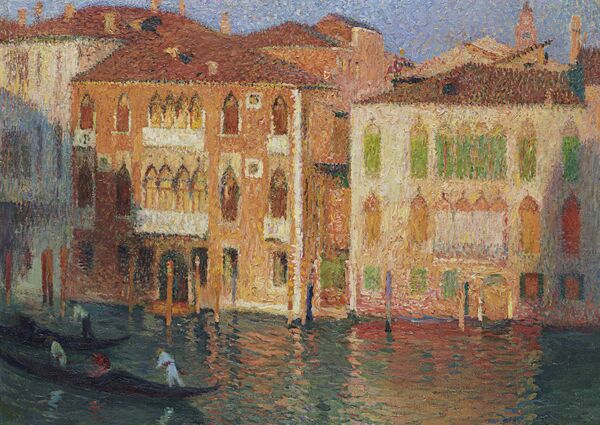Henri Martin
(French, 1860-1943)
Henri-Jean Guillaume Martin was born in Toulouse, France in 1860. He studied art formally under Jules Garipuy at the Ecole des Beaux-Arts in Toulouse and while there he also studied with Eugene Delacroix. In 1879 Martin moved to Paris and worked in the studio of Jean-Paul Laurens. He received his first medal at the Paris Salon in 1883 at the age of 23 and went on to hold his first exhibition there three years later.
In the early years of his career Martin was awarded a scholarship which took him to Italy. This journey was to have a profound effect upon his artistic development. Before visiting Italy, Martin's early style was largely based upon a classical, cold and correct technique which focused on the idealised historical characters and events popularised by the Paris Salon. In Italy however, Martin discovered the beauty of colour and light, both in nature and in the works of the great masters, such as Giotto and Masaccio. Inspired by what he saw he abandoned the academic style of his earlier works and adopted a style that utilised radically short brush strokes and divided the picture into a mass of small and visible strokes. In many ways this technique was reminiscent of the works of Georges Seurat.
Back in Paris, Martin received the gold medal at the Salon in 1889 and became a member of the Legion of Honour. He painted some unusually large pictures for the Neo-lmpressionists and won great acclaim when he exhibited them at a one-man show at the Mancini Gallery in 1895. Furthermore, he won the Grand Prize at the World Fair in 1900. As the prestige and popularity of Henri Martin grew, he was commissioned to paint some important murals for the city hall in Paris in 1895, and for the Capitol in Toulouse in 1903-1906. During this busy period in his career, Martin also became good friends with the sculptor Auguste Rodin.
Though a well established and commended artist, Martin remained shy and introvert throughout his life, even refusing contracts from many successful Parisian dealers. By the turn of the century he found that he no longer enjoyed living in Paris and began searching for an ideal home elsewhere. Eventually he bought a mansion overlooking La Bastide du Vert, near Cahors. In this relaxed and tranquil setting Martin began painting the countryside around his home almost exclusively and found a style and technique with which he was comfortable. The colourful and light filled canvases he produced at this time are widely considered to be amongst his most successful works. Henri Martin's painting changed very little from this time onwards and he continued to paint the environs around his home until his death in 1943.

